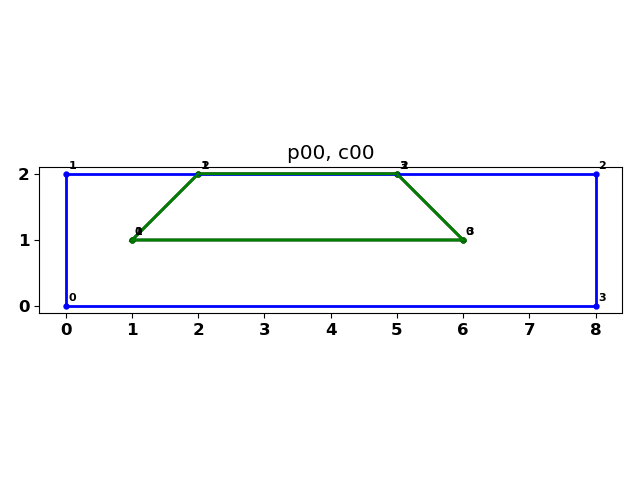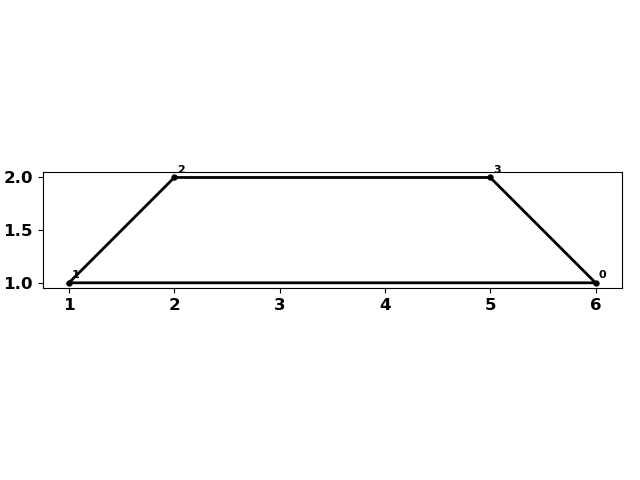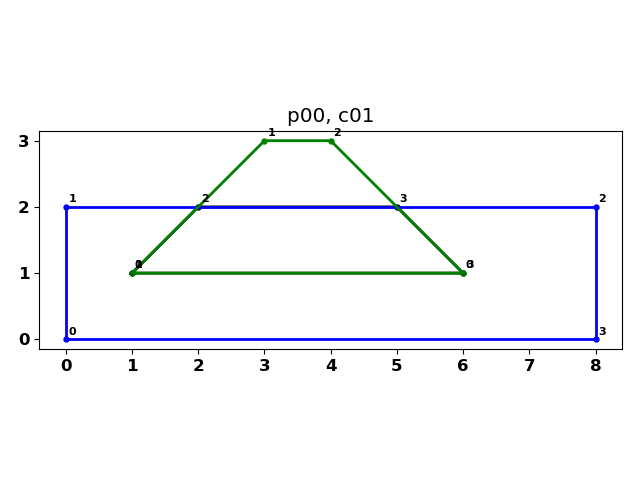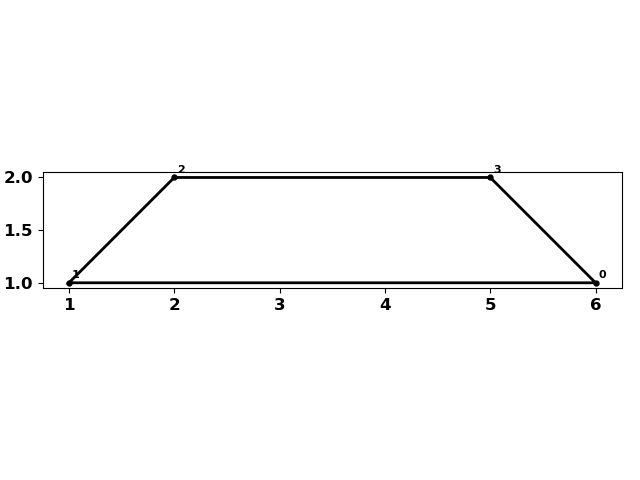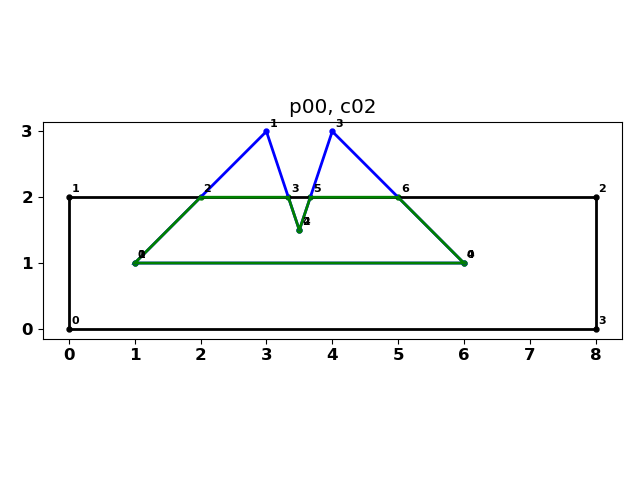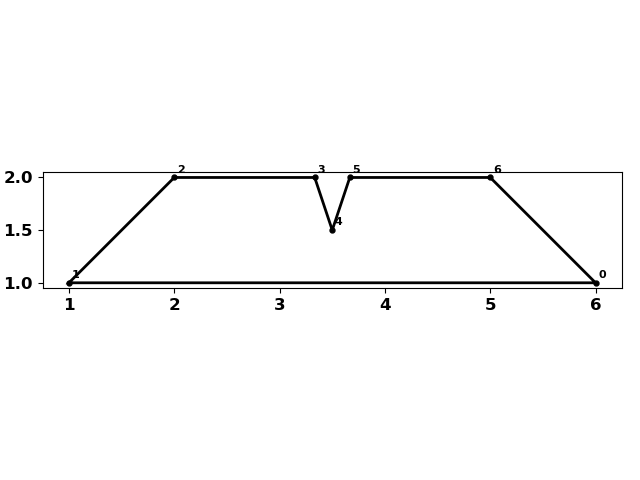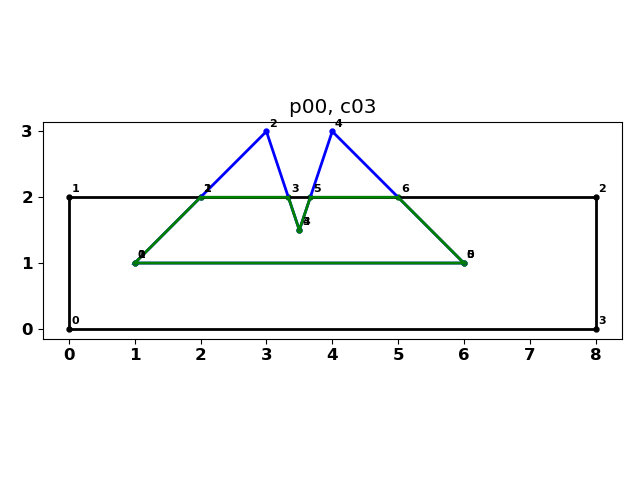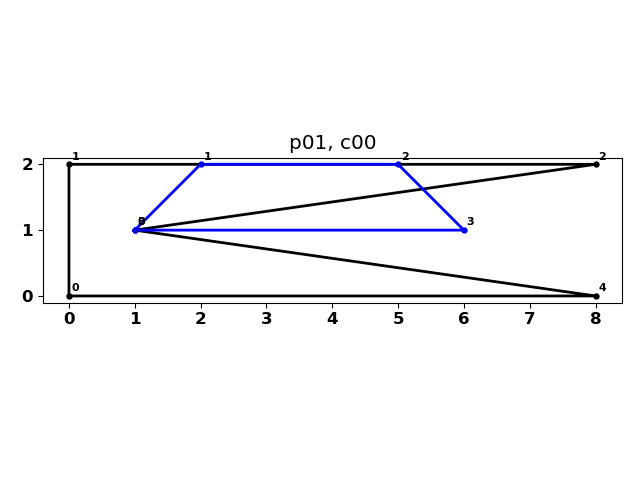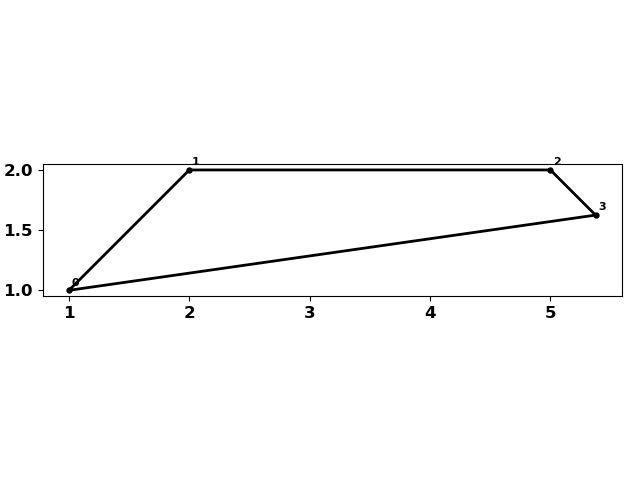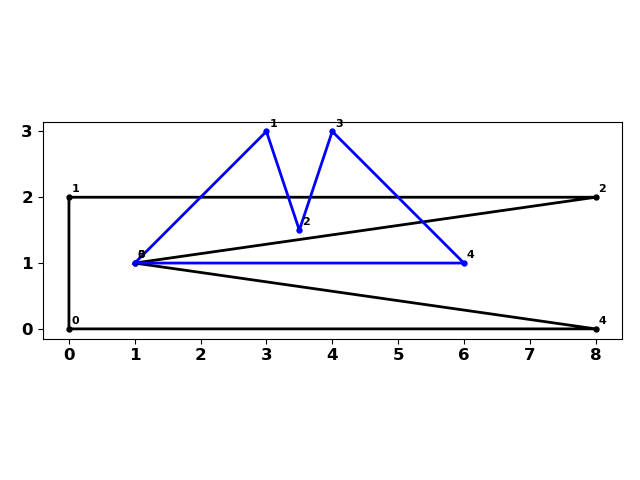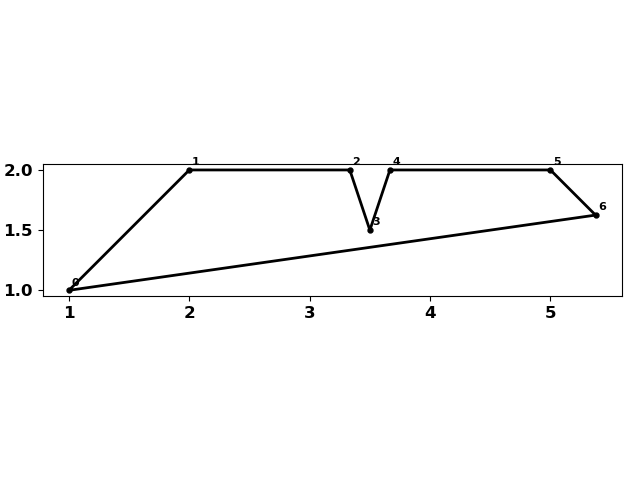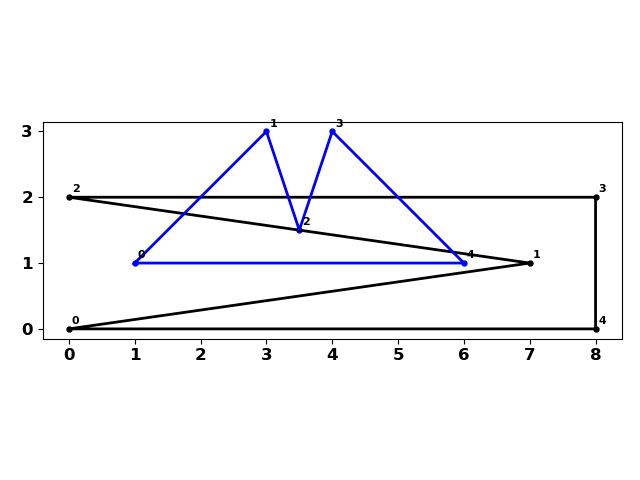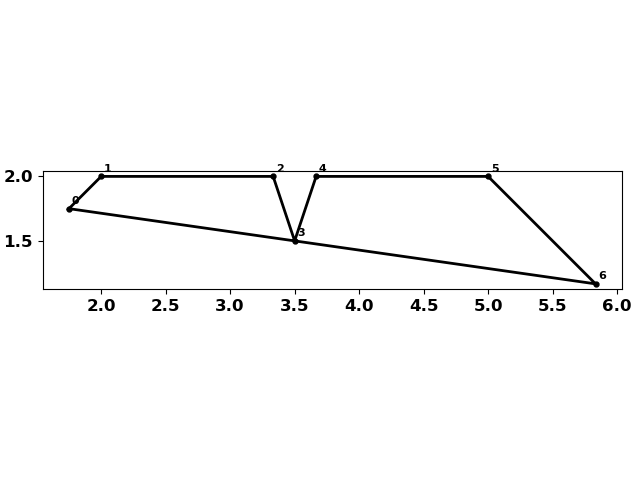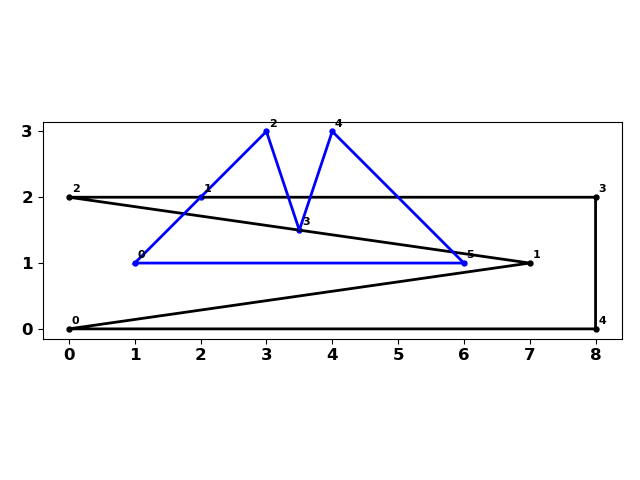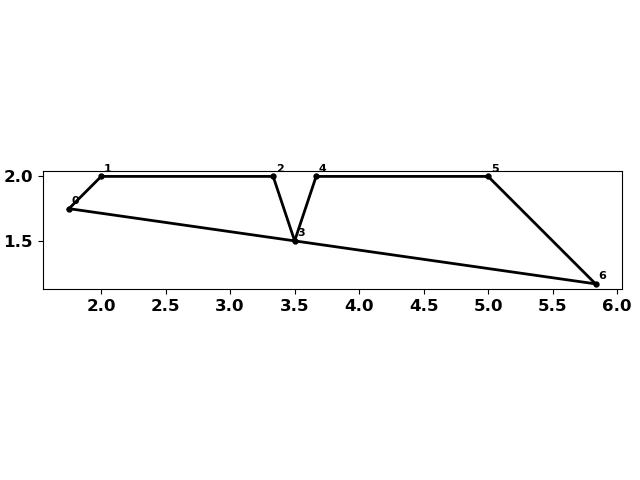Python, NumPy polygon clipping for concave and convex polygons.
Source code is part of numpy_geometry... npg.
Clipping discussion and example.
This implementation sets out to determine the intersection (clip) between two polygons. I employed
- winding numbers to determine which points were inside, outside and on the perimeter of each other.
- from there, intersections were made and those points classified as above.
- the intersection points were simplified to the bare minimum as a crossings array which denotes which segments crossed and hence which points were involved.
- using a bit of logic, either a clipping segment crosses another segment on the polygon to clip's segment, or at one of its endpoints.
- a clipping segment can start inside or outside or on the polygon perimeter and they can meet begin/end on polygon vertices.
Enough said, the script can be imported and used with clockwise oriented NumPy arrays.
I don't cover interior holes, but it could be included by processing the exterior rings first, then reversing the order of interior rings and processing those, combining the results at the end. I didn't since it was more of venture of finding out where this worked and where logic failed. As such, I will make notes of changes that I make as I test more polygon arrangements.
Last edit ...
- 2022-11-27
| complex polygon examples | |
|---|---|
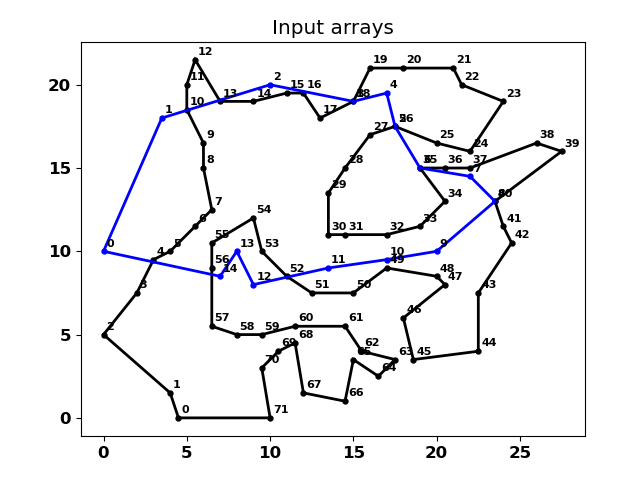 |
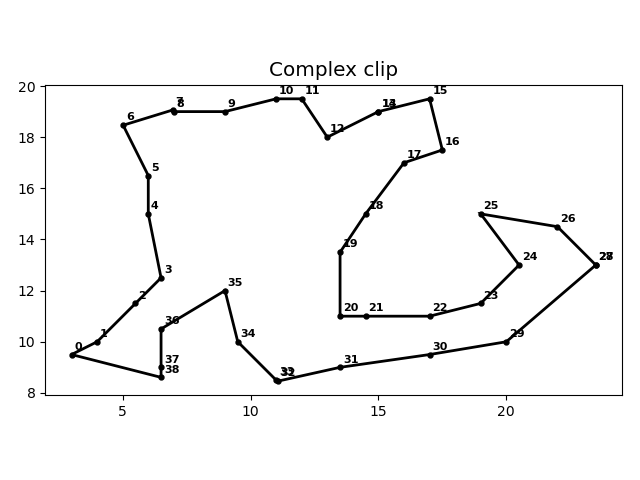 |
The blue polygon is the clipping polygon and the black one is the polygon being clipped.
| another concave example | |
|---|---|
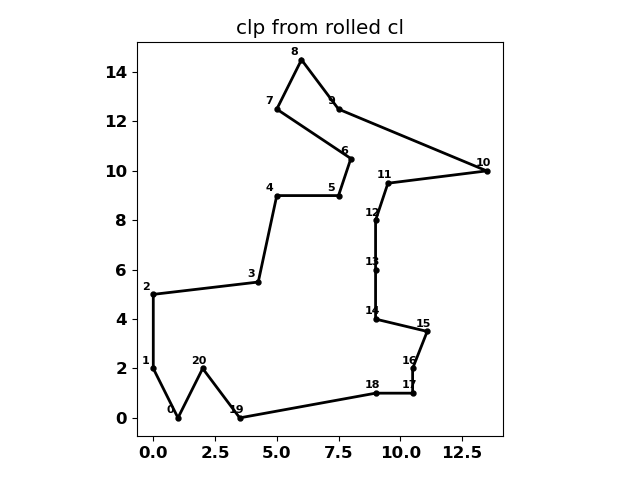 |
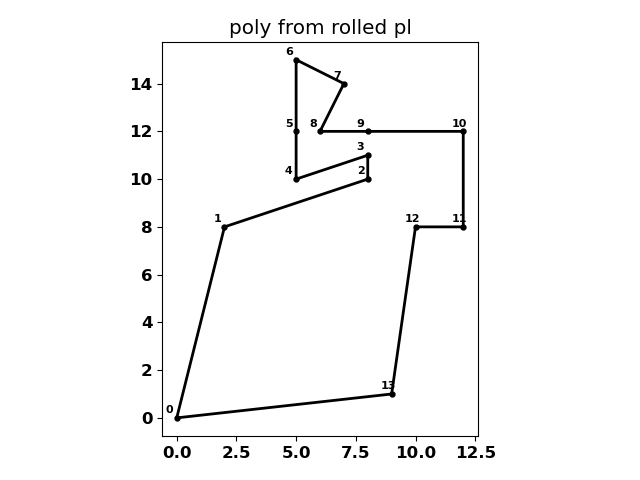 |
| Input polygon | Clipping polygon |
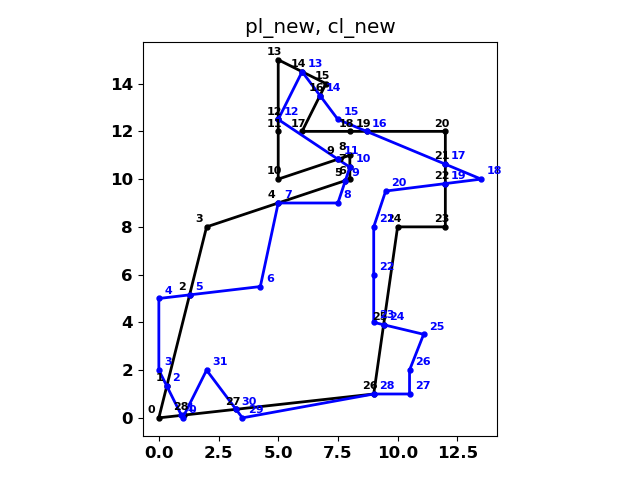 |
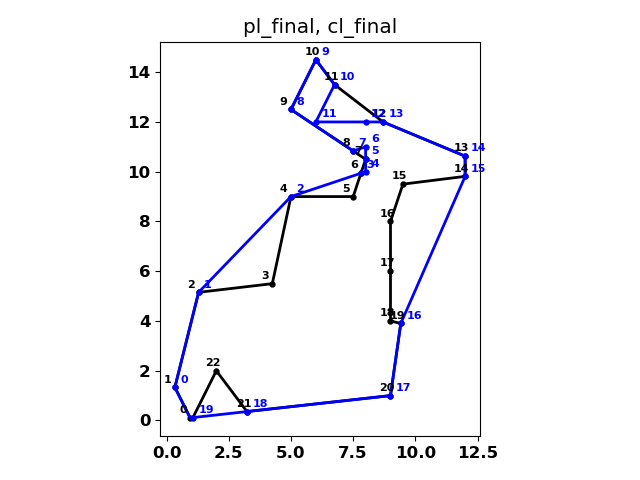 |
| More | Clip result. |
| Annotated result|
| 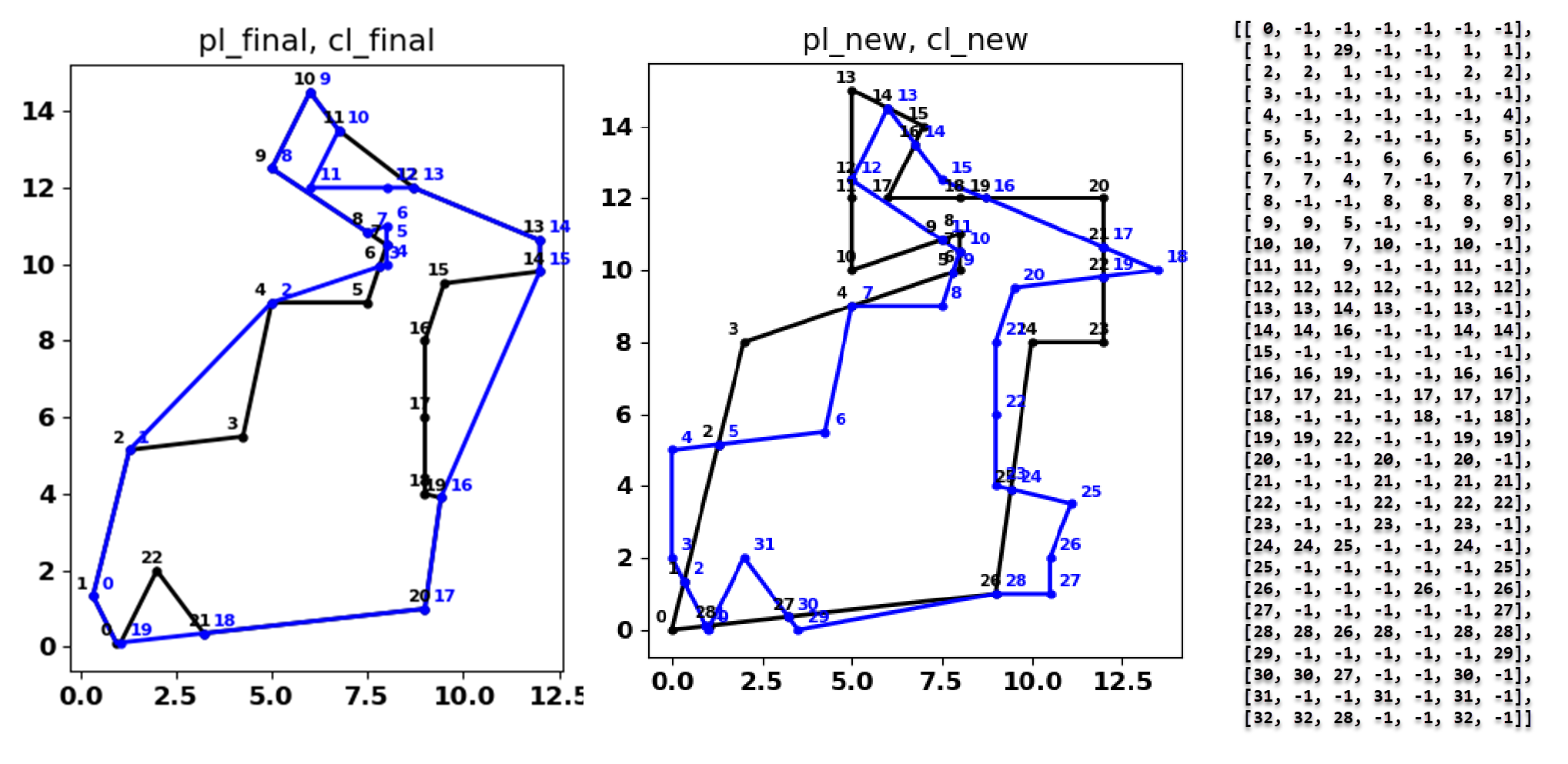 |
|
|
| 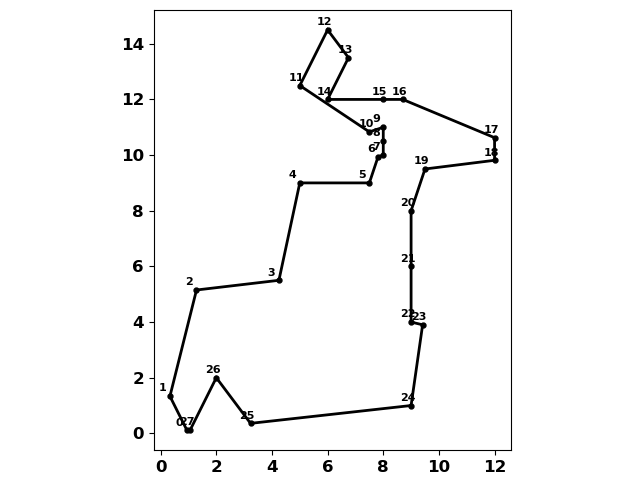 |
| More |
|
| More |
Continue tomorrow
new_ xChk x0x1 p_in_c c_in_p
new_, tot_, xChk, x0x1, p_in_c, c_in_p = clip(pl, cl)
# -- intersection point pairs
x0x1
[array([[ 0.95, 0.11],
[ 0.33, 1.33]]),
array([[ 1.29, 5.15],
[ 5.00, 9.00]]),
array([[ 7.81, 9.94],
[ 8.00, 10.50]]),
array([[ 7.50, 10.83],
[ 5.00, 12.50]]),
array([[ 6.00, 14.50],
[ 6.75, 13.50]]),
array([[ 8.70, 12.00],
[ 12.00, 10.62]]),
array([[ 12.00, 9.81],
[ 9.41, 3.90]]),
array([[ 9.00, 1.00],
[ 3.23, 0.36]]),
array([[ 1.06, 0.12],
[ nan, nan]])]
# -- polygon points in clipper, clipper points in polygon
p_in_c # [2, 3, 8, 9, 13]
c_in_p # [3, 4, 5, 6, 7, 8, 11, 12, 13, 14, 18, 20]
# -- xChk output
xChk
array([[ 0, 0, 0, 13, 0, 0, 0, 1],
[ 2, 3, 0, 1, 0, 1, 0, 0],
[ 5, 5, 1, 2, 1, 1, 0, 1],
[ 6, 6, 3, 5, 1, 1, 1, 0],
[ 7, 8, 6, 7, 1, 1, 0, 0],
[ 9, 9, 9, 10, 0, 0, 1, 0],
[10, 14, 10, 12, 0, 1, 0, 0],
[17, 19, 12, 13, 0, 0, 0, 1],
[20, -1, 13, -1, 1, 0, 1, 0]], dtype=int64)
# -- script output
0 x0,x1 [ 0.95 0.11], [ 0.33 1.33]
xC [ 0 0 0 13 0 0 0 1]
c0c1_, p0p1_: 0 0 0 1
bfc:bfp [] []
btc:btp [] [2, 3]
sub : []
1 x0,x1 [ 1.29 5.15], [ 5.00 9.00]
xC [2 3 0 1 0 1 0 0]
c0c1_, p0p1_: 0 1 0 0
bfc:bfp [] []
btc:btp [3] []
sub : []
2 x0,x1 [ 7.81 9.94], [ 8.00 10.50]
xC [5 5 1 2 1 1 0 1]
c0c1_, p0p1_: 1 1 0 1
bfc:bfp [4, 5] []
btc:btp [] []
sub : [array([ 5.00, 9.00]), array([ 7.50, 9.00])]
3 x0,x1 [ 7.50 10.83], [ 5.00 12.50]
xC [6 6 3 5 1 1 1 0]
c0c1_, p0p1_: 1 1 1 0
bfc:bfp [] []
btc:btp [] []
sub : []
4 x0,x1 [ 6.00 14.50], [ 6.75 13.50]
xC [7 8 6 7 1 1 0 0]
c0c1_, p0p1_: 1 1 0 0
bfc:bfp [] []
btc:btp [7, 8] []
sub : []
5 x0,x1 [ 8.70 12.00], [ 12.00 10.62]
xC [ 9 9 9 10 0 0 1 0]
c0c1_, p0p1_: 0 0 1 0
bfc:bfp [] [8, 9]
btc:btp [] []
sub : [array([ 6.00, 12.00]), array([ 8.00, 12.00])]
6 x0,x1 [ 12.00 9.81], [ 9.41 3.90]
xC [10 14 10 12 0 1 0 0]
c0c1_, p0p1_: 0 1 0 0
bfc:bfp [] []
btc:btp [11, 12, 13, 14] []
sub : []
7 x0,x1 [ 9.00 1.00], [ 3.23 0.36]
xC [17 19 12 13 0 0 0 1]
c0c1_, p0p1_: 0 0 0 1
bfc:bfp [] []
btc:btp [18] []
sub : []
``
</p>
<br clear="right">
<!-- <a href="url"><img src="../images/npGeo_conversion_tools.png" align="center" height="auto" width="200" ></a> -->